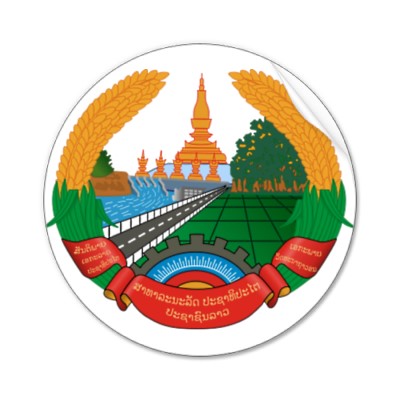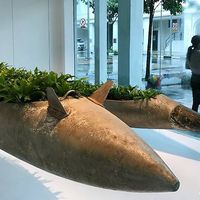Current Audiovisual And Cinema Situation In Laos

Laos is one of the latest Asian countries that have joined ASEF and remains one of the less documented on the Film.Culture360.org website, along with Brunei.
Laos has no direct access to the sea and is the less populated country of the Mekong river area with a population of 5.6 millions. Laos is a socialist republic since 1975 and its official name is Lao People's Democratic Republic.
Very few resources exist on Laotian film and audiovisual activities. One of the two essential sources of information is the essay titled Lao Cinema by Bounchao Phichit, currently the director of the National Film Archive and Video Center. The book was published in late 90s by SEAPAVAA (South East Asia-Pacific Audio Visual Archives Association) in a collection of essays on South East Asian cinema. The other important source is the British website Cultural Profiles, which presents an in-depth study on Lao Filmmaking history and a complete list of key contacts in the domain of arts and media.
Film history in Laos can be divided in two distinctive periods, before and after 1975. Given the fact that the country was the theatre of long wars and a lack of documentation, when the first screening took place or which was the first film to be shot in Laos remains unknown, and will probably be impossible to find out in the future.
At the heart of the civil war (also known as the War of Liberation) were the Government of the Kingdom of Laos, supported by France and the USA, and the Lao National Patriotic Front Government, supported by Vietnam, Soviet Union and China. Both camps produced newsreels, documentary and propaganda films for screenings in theatres. There were 16 theatres were in operation in 1974 in Laos, nine of them being in Vientiane, and there were also mobile film projectors in the countryside. In Vientiane, there were independent filmmakers and producers who were active in this period, but most of the prints and information were lost, and it is impossible to find out the names of the directors. The only information that survived the period is the titles of these films. After the proclamation of the socialist regime in 1975, film production was controlled by the Cinema Department under the Ministry of Information and Culture. As Mr Phichit explains in his essay, Lao authorities "pointed out that cinema had to play a significant role in educating the masses and serving the dissemination of the new policies of the government in the construction of the socialist system". The government was, thus, responsible for film funding, production, and distribution.
The Cinema Department produced documentary films in this period and imported films not only from Soviet Union, Vietnam, Thailand, and India, but also a small number from the West including France, Italy and USA. From this period on, only two fiction feature films have been produced in Laos so far. One of the two is The Voice of Guns from the Plain of Jars, a political and war film, the action of which takes place in 1958. It was made in 1983 as a co production with Vietnam and shot in colour 35mm film. The film did not prove to be a success partly because of poor technical sounds and bad photography quality. In 1988, Lao Government decided to subsidize another film, Red Lotus, but with a limited budget. The director Som-Ock Southiphonh and key technical crews had all been trained abroad. This black and white film has been noted for its quality in depicting family life in a Laotian village in the early 1970s. Red Lotus participated in several film festivals such as Moscow, Fukuoka, Hawaii, and Phnom Penh. In the late 80s, it was no more possible for the government to fund feature films because of shortage of funds and economical difficulties after the fall of the Soviet block. However, video and television appeared in Laos in this period.
In 1991, the National Film Archive and Video Center was established under the initiative of the Ministry of Information and Culture. This institution is in charge of the preservation of audiovisual heritage and production of occasional video programmes and fictions. 20 000 film reels of Laotian and foreign origin are stored in low temperature rooms. The institution is currently trying to create a database of its archives with the support of UNESCO.
Lao National Television was established in 1983 and runs two stations, TV3 and TV9. The half of the TV9 programmes are the same as TV3, and the other half consist of a mix of more entertaining programmes (often foreign films and TV series dubbed in Lao) and the same signal as TV3. A limited number of TV dramas have been occasionally produced by the television. Apart from these occasional dramas, only news coverage is produced on a regular basis. Most equipment has been donated by foreign countries such as Vietnam, China, Japan, and France. The television also carries out the task of publicising the government and party messages, especially in social and health education.
An additional channel, which was entirely in the French language and mostly subsidized by France, stopped broadcasting a few years ago. Nowadays, a daily TV news programme in French is aired twice in the evening on TV3, as well as news in English.
Despite the difficulties of local funding, the new Director General of Lao National Television, Dr Bounchom Vongphet, is trying to secure ties and partnerships with Korea and Thailand, and hopes to produce five TV dramas in 2007. National Television seems to open up to the private sector: The government is currently in talk with two private companies. Yet, it is not clear at the moment if these companies aim to run their own channel or to produce contents for National Television.
A glimpse at the streets in Vientiane is enough to find out that Thai TV programmes are watched everywhere and highly popular with Laotian population thanks to satellite and cable channels. Laos and Thailand share common cultural heritage and a linguistic closeness. Most Laotians have no difficulties understanding the Thai language. Thai pop-cultures, especially soap operas and films, are loved by a lot of Laotians.
Recent productions of documentaries and short fictions are exclusively shot on video, Hi8 and DV being the most popular formats. Apart from the films produced by the National Film Archive and Video Center and National Television, there are a few independent companies involved in documentary and educational film production. Watermark Design Evolution is one of them and has produced short films commissioned by the Ministry of Education, some NGOs and foreign foundations such as Toyota Foundation and the Australian Red Cross. The subjects of these short films are health education and agricultural and breeding advices, and recently, wearing of helmets for motorbike riders. Director of Red Lotus, Som-Ock Southiphonh, has also shot a series of portraits of women commissioned by the Lao Women Union. The director had a new feature film project, Les Amis (“The Friends”), which was invited to take part in the co-production meeting, Atelier du Festival, organised by the Cannes Film Festival in 2005. Although the project could secure an important part of its budget with Fond Sud and a Japanese investor, the director has given up the project for the moment since it was impossible to raise local funds, either from the government or Lao private sectors.
Concerning film exhibition, only one commercial theatre with two screens is in operation. The theatre is located inside Lao-ITTEC, the convention centre of Vientiane, which was built to host the ASEAN summit in 2003. Prints are imported from Thailand, and films played there are mostly Thai, Korean and American. Ticket price has recently been cut down from 15,000 Kips to 10,000 (around 1 USD). Lao-ITTEC has also a bowling alley and the biggest supermarket of the city, which makes it a popular hang-out place for the youth.
Other exhibition venues include the Centre culturel et de coopération linguistique (Cultural and Language Co-operation Centre of France), which screens art films on a regular basis both on 35mm and video format. The National Cultural Hall hosts from time to time film events like an Australian film week in 2006. Opened in 2000, the National Cultural Hall has 1367 seats and is equipped with projectors of 35mm and video facilities, donated by China. There exists no film festivals in Laos, but the National Film Archive and Video Center is planning to organise a local film week in late 2007, on the occasion of the World Day for Audiovisual Heritage. Local films, documentaries and TV dramas are available on VCD, but they are sold in a limited number of venues such as museums and the National Film Archive and Video Center. Pirated VCDs and DVDs of foreign films can easily be purchased in markets and video shops in Vientiane at a relatively low price, though choice for non-commercial films is extremely limited.
To sum up the current situation of audiovisual industry of Laos, production of local feature films seems to be still in a difficult phase, partly because of lack of filmmaking equipment, skills and experience, and mainly because of absence of domestic funds. Yet the efforts of the public authorities to preserve the country’s film heritage should not be forgotten. Where future development is concerned, my field trip and research convinced me of a high potential of the country as a shooting location. Given that Laos possesses numerous beautiful and original landscapes, along with an important architectural heritage, places like Luang Prabang can serve as a world-class location. Cinema-goers of the world have not yet seen these beautiful places in films. The country could promote itself as a shooting destination vis-à-vis foreign productions. Its neighbouring country, Cambodia, has already become popular as a location place among foreign productions, notably French, Korean and American. I’d like then to suggest the creation of a state agency that could promote the country internationally in professional film events and provide foreign professionals with useful information on regulations of custom, weather forecasts, accommodation tips, etc. During my fieldwork, I found out that a foreign producer who wants to shoot in Laos would have a lot of difficulties finding out which organisation to approach. The cooperation with foreign productions seems to be a useful first step to boost the country’s audiovisual activities and develop the industry. Tourism and economic development might well be brought about as well.
Similar content
posted on
03 Sep 2012
from - to
09 Nov 2018 - 16 Jan 2019
posted on
06 Jun 2011
posted on
06 Jun 2011
posted on
29 May 2011

